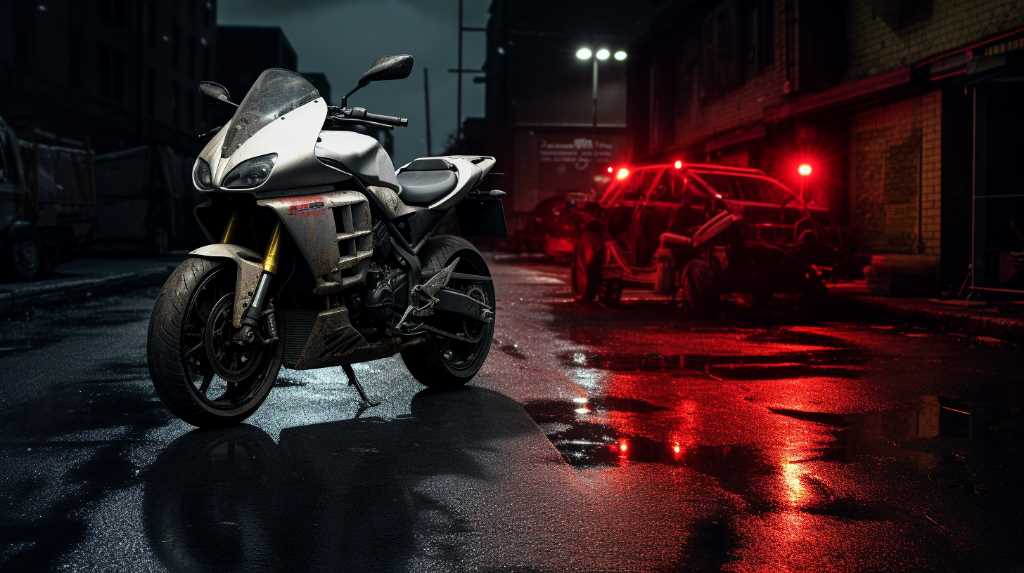
To figure out who is to blame in a motorcycle accident when someone is backing up, you need to look carefully at the traffic laws and understand how drivers are supposed to share the road. When this type of accident happens, it’s important to check everything at the scene, like how easy it was to see, any road signs, and what everyone involved was doing.
The rules about motorcycle accidents can be complicated and different depending on where you are, especially when it comes to who has the right to go first and how to back up safely. It also matters what witnesses saw and what kind of proof you can find to show who was at fault.
Plus, if everyone follows safety tips and drives carefully, these accidents can happen less often. This is just the beginning of looking into who is responsible when a motorcycle gets into an accident while backing up.
Understanding Road Sharing Responsibilities
Motorcyclists and drivers alike are obliged to adhere to road sharing responsibilities to ensure safety and reduce the likelihood of accidents during maneuvers such as backing up. This duty requires a heightened awareness of one’s surroundings and the potential risks posed by such actions.
From an analytical standpoint, thorough observation before reversing is paramount. Drivers must employ rearview and side mirrors effectively, and, where possible, physically check over their shoulder to identify any approaching motorcyclists. Similarly, motorcyclists must maintain a vigilant approach, recognizing the limitations of a driver’s visibility and exercising caution by keeping a safe distance.
Methodically, both parties should signal their intentions in a timely manner, allowing the other to anticipate and react accordingly. This systematic vigilance is crucial in mitigating collision risks during reverse maneuvers.
Analyzing the Accident Scene
To find out who is responsible for a motorcycle accident with a vehicle that was reversing, it’s really important to look closely at the scene of the crash. People investigating need to carefully record everything they see there. They should note where the vehicles ended up after they hit each other, any tire marks, scattered bits and pieces, and check for videos from security cameras. It’s also key to see where street signs, traffic lights, and road lines are in relation to where the accident happened. This helps to understand how the crash occurred.
Gathering all this information and comparing it to what witnesses say and the traffic rules helps to create a clear picture of what happened. Doing this step by step is the best way to figure out who caused the accident fairly and without bias.
Legal Framework for Motorcycle Accidents
The legal determination of fault in a motorcycle accident involving a backing vehicle hinges on a variety of state-specific traffic laws and principles of negligence. Within this framework, fault is typically ascertained by meticulously evaluating the actions of each party against the requisite duty of care. This duty mandates that all drivers, including motorcyclists and those operating vehicles in reverse, must act with reasonable prudence to avoid harm to others.
In instances where a vehicle is backing up, the driver is generally expected to ensure that it is safe to do so without endangering other road users. If the investigation reveals that the driver failed to observe this standard, perhaps by not checking mirrors or ignoring rearview cameras, they may be deemed negligent. Conversely, if the motorcyclist was operating in a reckless manner, they too could be found at fault.
The allocation of liability is thus a precise exercise, grounded in the nuanced application of statutory regulations and case law precedents.
The Role of Witnesses and Evidence
In motorcycle crash cases, figuring out who’s at fault often depends a lot on what witnesses say and the evidence that’s collected. Witnesses are important because they can describe what happened, like where the vehicles were and what they were doing right before the crash. This can help figure out if the motorcycle rider or the driver of the other vehicle had the right to go first or if one of them was not following the rules of the road.
Also, things like videos from security cameras or dashcams, and photos of where the crash happened are super helpful for piecing together what occurred. Experts will look at things like tire marks, damage to the vehicles, and the condition of the road, and compare that info with what witnesses said. This careful way of looking at the facts helps make sure that the decision about who was at fault is fair and based on real evidence.
Preventive Measures and Best Practices
To lower the chance of accidents when backing up, both motorcyclists and car drivers need to follow safety steps.
Motorcyclists should:
- Signal clearly before they move to let others know what they’re doing.
- Check their mirrors and look over their shoulder to see blind spots.
Car drivers should:
- Watch out carefully for motorcyclists, who are harder to spot.
Everyone needs to:
- Pay attention to people walking and any obstacles, and be careful.
Additionally, motorcyclists should:
- Try not to back into traffic.
- It’s better to get off and turn the bike by hand to face where you want to go.
Doing this helps prevent accidents because:
- You have better control and can see more.
Conclusion
To figure out who caused a motorcycle crash when someone was backing up, it’s important to look closely at how drivers are supposed to share the road. What witnesses say and the clues we find are key to figuring out who is to blame. If drivers know and follow safety tips, we can avoid a lot of these crashes.
It is also crucial to examine the accident scene, as it can provide valuable information. Additionally, understanding what the law says about such situations can help determine liability.
In order to ensure fairness, it is necessary to carefully analyze each case and treat everyone involved equitably.